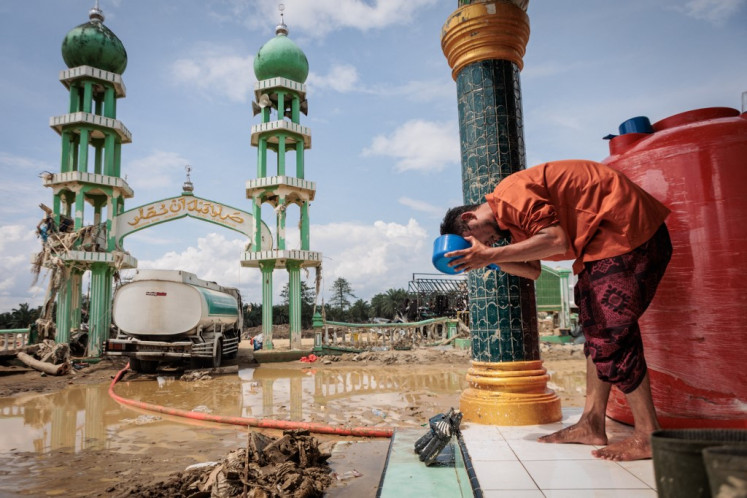Popular Reads
Top Results
Can't find what you're looking for?
View all search resultsPopular Reads
Top Results
Can't find what you're looking for?
View all search resultsMacau: A jackpot of bright city lights and heritage sites
Change text size
Gift Premium Articles
to Anyone
H
ome to a unique combination of Cantonese-Portuguese elements, Macau's vibrant cultural heritage often falls in the shadows of its blinding city lights and glittering chandeliers inside its grand hotel hallways.
The Chinese special administrative area, which is infused with European roots across its 30-square-kilometer land, is located a short hour-long ferry ride from Hong Kong.
Its preserved history still evident in the nooks and crannies across the city, while clusters of lavish hotel complexes, most of which host extensive casino grounds and luxurious shopping malls, greet guests upon arrival.
While gambling areas are open 24 hours, big spenders only have half that time to exchange their hard-earned cash for coveted items that are free from sales tax, as most shops open from 10 a.m until 10 p.m.
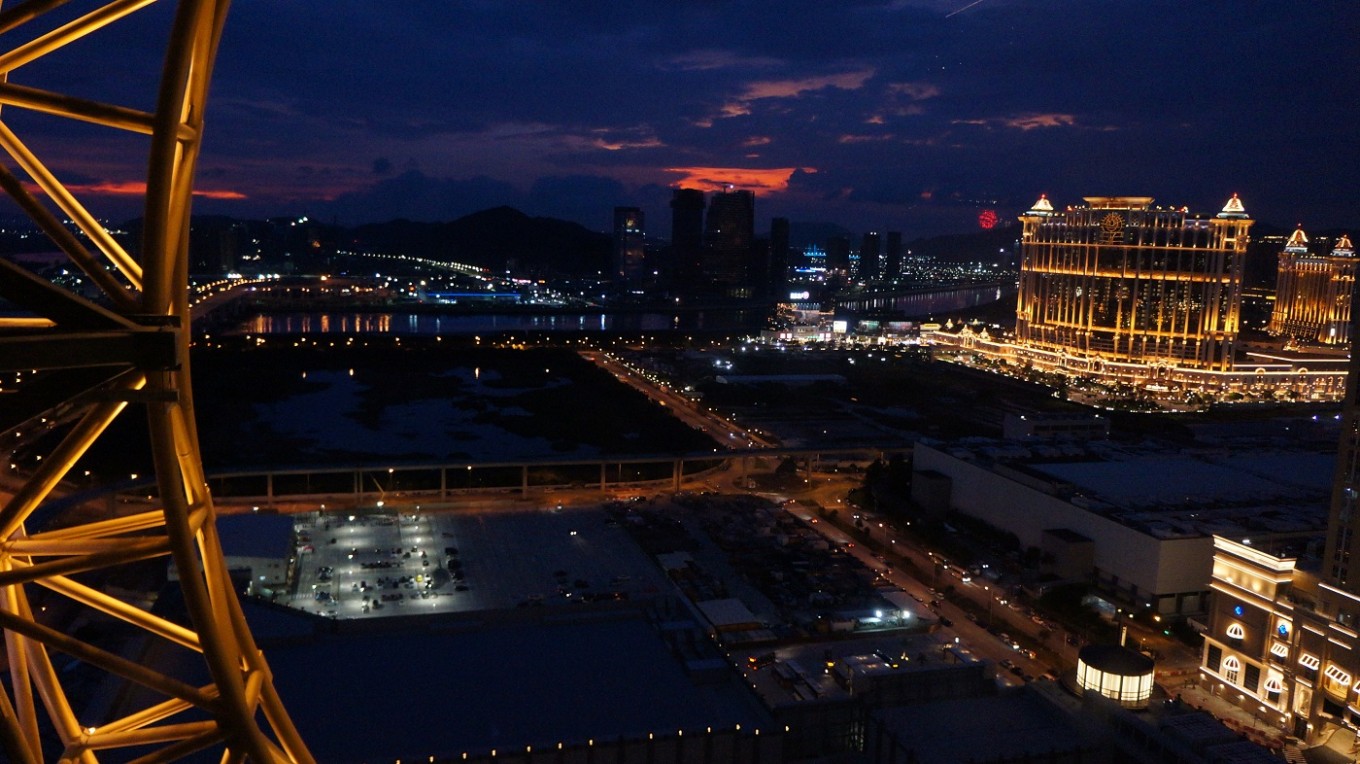 The view from Studio City's Golden Reel, the world's highest figure-8 Ferris at 130 meters where visitors can enjoy the Macau view from the top. (JP/Liza Yosephine)
The view from Studio City's Golden Reel, the world's highest figure-8 Ferris at 130 meters where visitors can enjoy the Macau view from the top. (JP/Liza Yosephine)
Stepping inside an edifice will transport visitors to another world of its own. I suddenly felt like a shrunken Alice in Wonderland on my first night in Macau as I entered inside the magical lobby of the MGM.
Past the foyer and inside the main hall, a giant floor-to-ceiling aquarium stands in the middle of an enormous room as rainbow-colored butterfly sculptures hung all across the ceiling. The facade of fairy tale-like castles complete the dream land fantasy, as a set of a double staircase are placed at one end of the room lead up to the balcony for which the kingdom can be looked over.
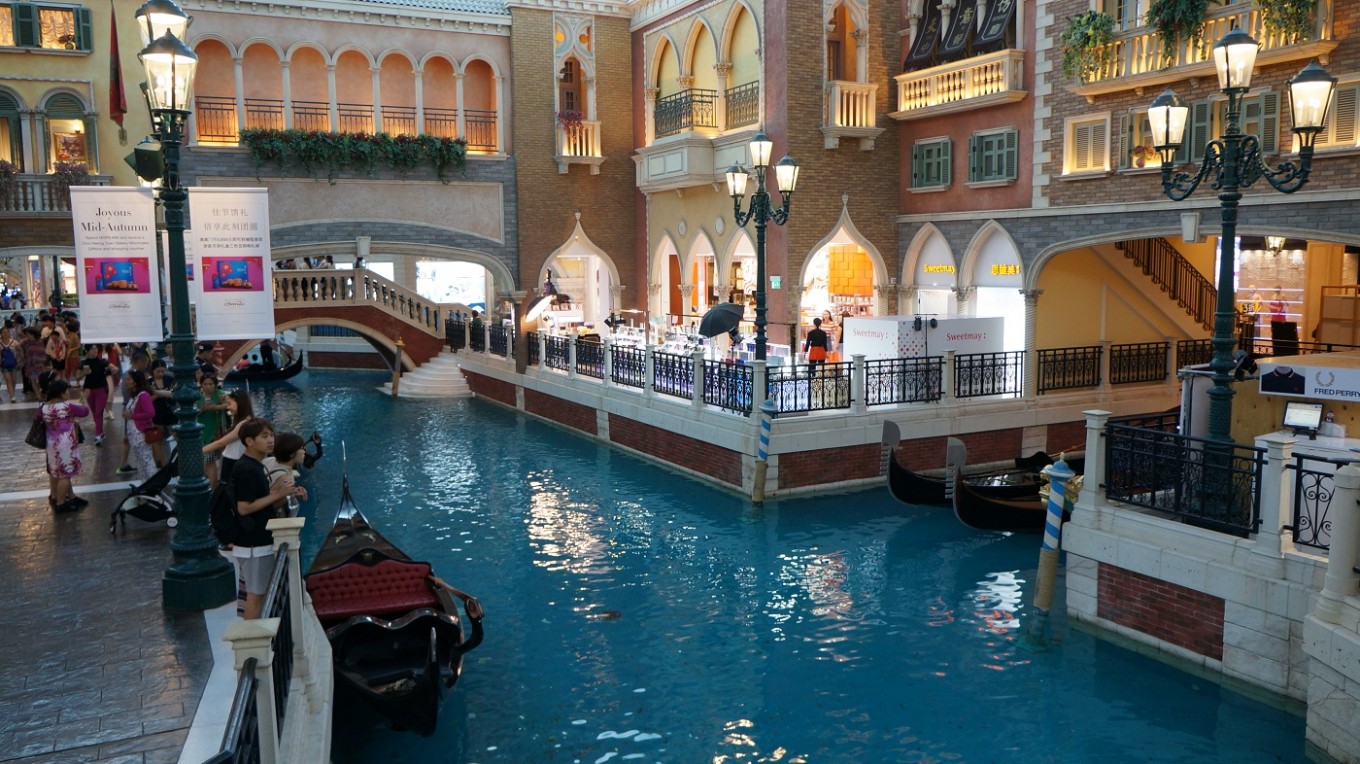 The man-made canals inside The Venetian where visitor can enjoy a gondola ride while being serenaded by a gondolier.(JP/Liza Yosephine)
The man-made canals inside The Venetian where visitor can enjoy a gondola ride while being serenaded by a gondolier.(JP/Liza Yosephine)
The next day I found myself in Venice, Italy—well at least a version of its interpretation—as I walked into The Venetian. The interior of the hotel's shopping mall takes on the European city's architecture as inspiration, while renaissance-inspired paintings decorate some of its ceilings. Walking around, I saw several visitors enjoy a ride on a gondola along the man-made canals while serenaded by a black-and-white-striped-uniformed gondolier—as you would in Venice. It's daylight non-stop inside as the ceiling above the canals are painted that of blue skies, complete with neatly scattered white-fluffy clouds.
A short drive to Studio City and visitors can enjoy the buzz of New York City's Time Square. The hotel, which takes its inspiration from the US film industry, is also home to the highest figure-8 Ferris wheel, situated at a height of 130 meters. Head on over to the 23rd floor just before dusk and get ready to be left breathless, as I was, watching the sun set over the glittering sky line.
(Read also: Macau ranks No. 1 in economic performance among world cities)
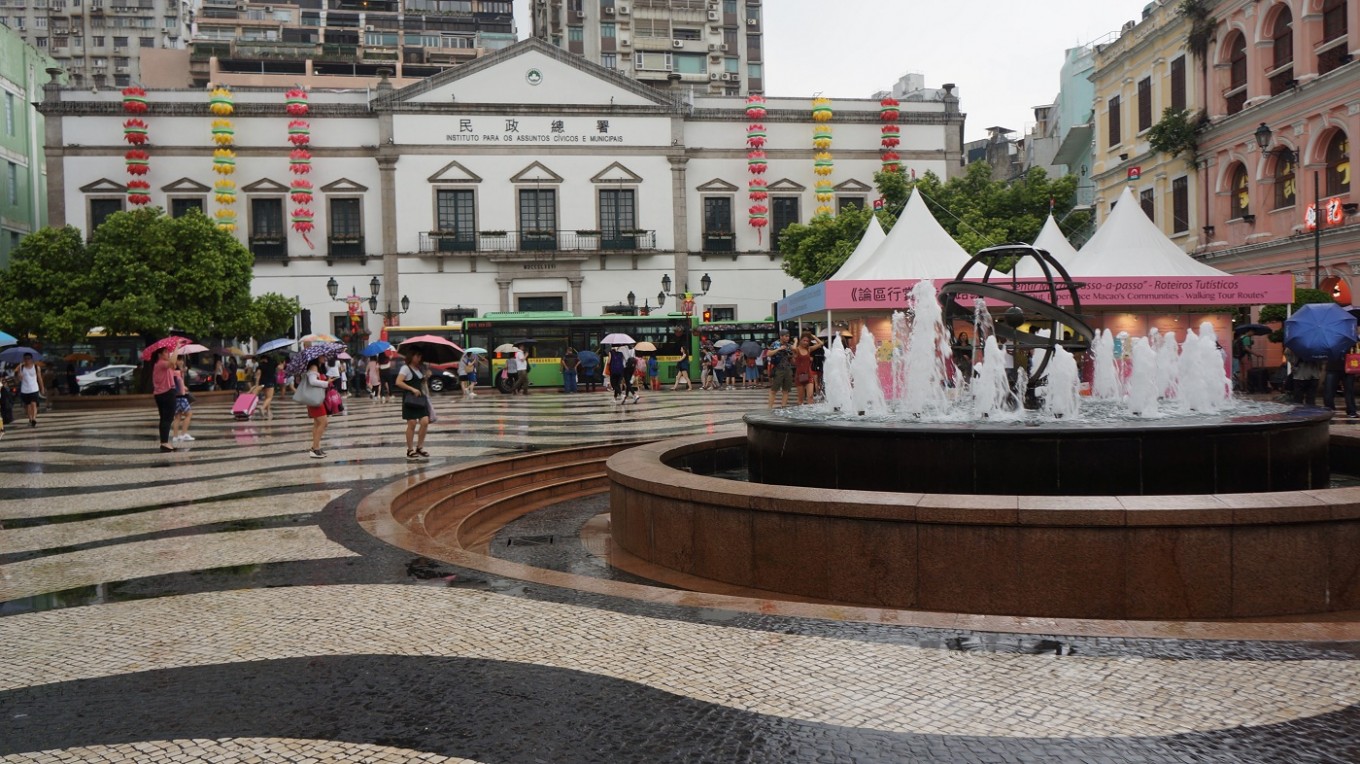 Part of the UNESCO Historic Center of Macau World Heritage Site, this public square is always crowded with shoppers and visitors alike.(JP/Liza Yosephine)
Part of the UNESCO Historic Center of Macau World Heritage Site, this public square is always crowded with shoppers and visitors alike.(JP/Liza Yosephine)
A view I also got to enjoy at 360 degrees was from Macau Tower's observation desk. Those with a wild streak can dare themselves to bungee-jump off the 61st floor of the tower, where words on its windows read: "Everyday do something that reminds you you're still alive." But if you're not ready for that yet still crave an adrenaline rush, outside on the same floor, visitors can enjoy a skywalk on the edge of the balcony, while being fastened to a safety harness attached to the building.
With so many things to do and so much ground to cover across the glitz and glamorous city centers, it's easy to forget that Macau has also preserved its enchanting cultural heritage side-by-side with its modern trajectory. Indeed, this was one of the main ideas pushed by Macau Government Tourism Office (MGTO) director Maria Helena de Senna Fernandes at this year's annual tourism industry expo.
"What we want to let people know is that Macau is much more than what they see normally," de Senna Fernandes told reporters recently on the sidelines of the 4th Macao International Travel (Industry) Expo.
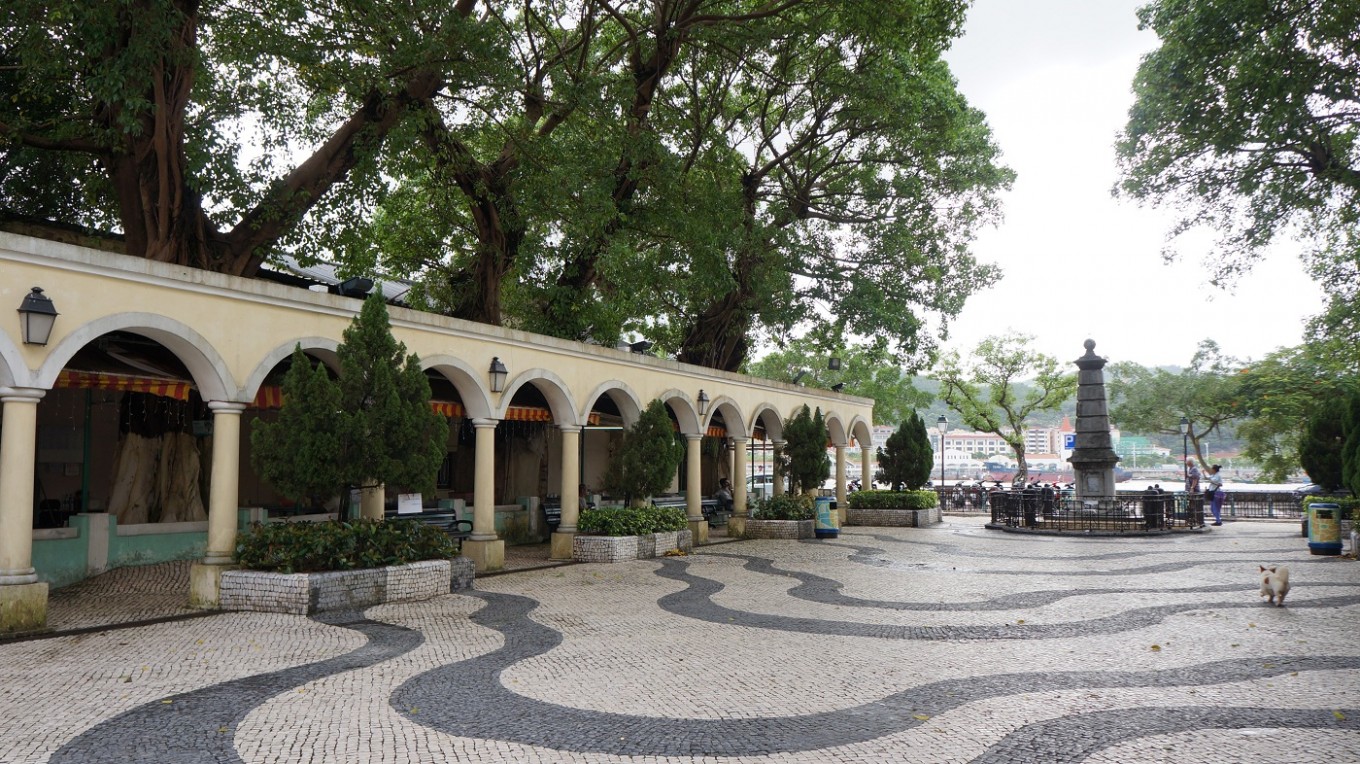 The quaint Coloane Village is a quiet coastal escape from the crowded tourist attractions and a world away from the bustling casino complexes.(JP/Liza Yosephine)
The quaint Coloane Village is a quiet coastal escape from the crowded tourist attractions and a world away from the bustling casino complexes.(JP/Liza Yosephine)
She pointed to the historic sites as some of her favorite spots to visit. The heritage-listed landmark of St Paul's ruins, located in the heart of the Macao Peninsula is arguably one of the most recognized icons, representing the other face of the coin. Built in the 17th century, the church burned down in 1835, but its facade was preserved and eventually has been included as a UNESCO World Heritage Site in 2005 as part of the Historic Center of Macau.
Rain started to fall as I walked down the steps of the church complex, but our tour group continued the journey onto Senado Square, located just a stone's throw away and was also heritage-listed. The contrast between the European nuances found in the cobble-stoned walkways combined with the Chinese writings and cuisines on display enriched the distinct atmosphere.
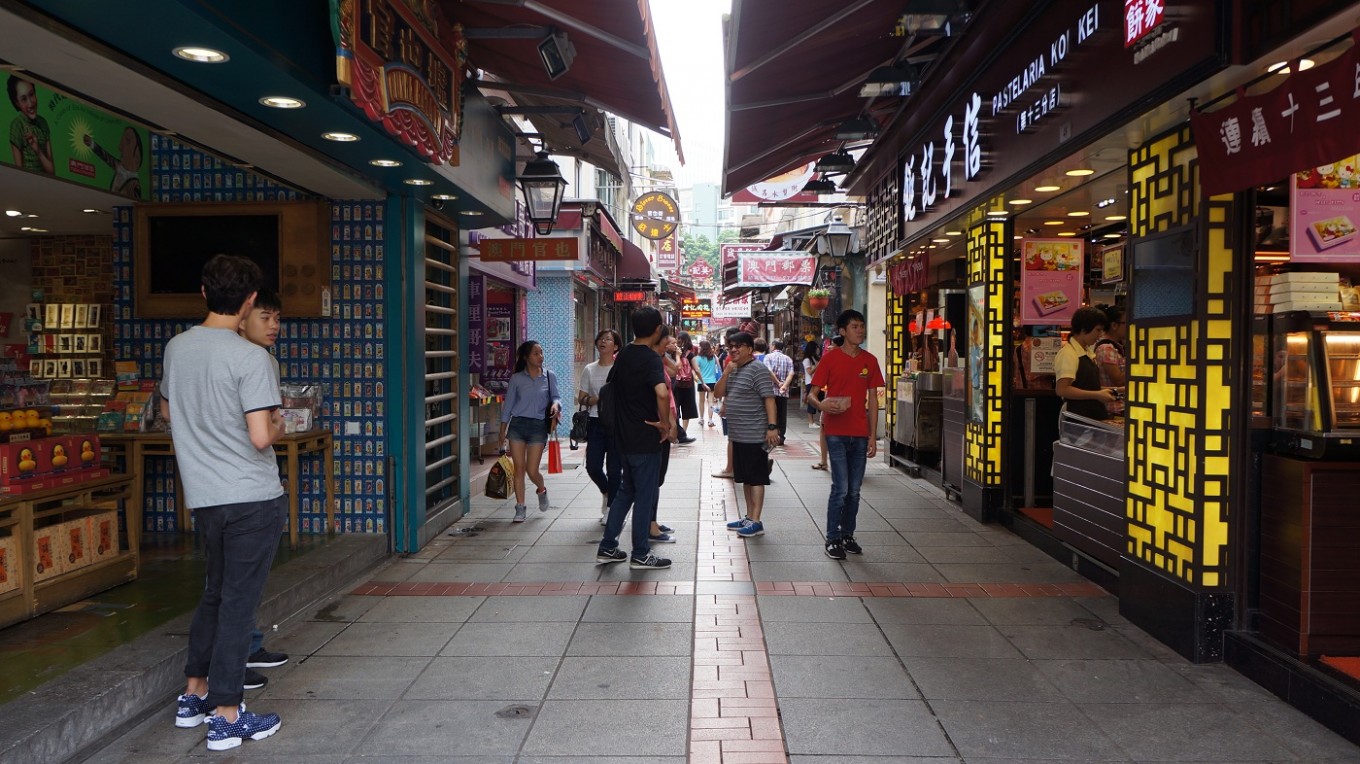 A vibrant street in Taipa Village filled with vendors selling authentic Macaunese culinary and merchandise.(JP/Liza Yosephine)
A vibrant street in Taipa Village filled with vendors selling authentic Macaunese culinary and merchandise.(JP/Liza Yosephine)
A quieter retreat of similar ambiance can also be found in the traditional villages of Coloane and Taipa. These neighborhoods are filled with eateries of traditional Macaunese culinary, including the famed Lord Stowe's bakery in Coloane Village that sells the signature Portuguese egg tart.
Despite its growing number of attractions, Indonesian tourism to Macau has been declining over the past few years, where it is also viewed as a stop over to neighboring Hong Kong rather than making it a main destination. The government of Macau has re-appointed its tourism representative in Jakarta in August to face the challenge. The new office is seeking to revitalize its strategies in the hopes to bring in more tourist and for them to stay longer.
"Macao is more than just a day tour and you need to actually spend more time here to take in all the different sites and different events," de Senna Fernandes said. (kes)





